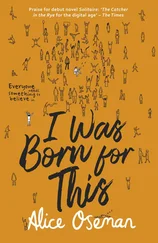“It looks like you’ve been rolling around in the dirt,” she claimed indignantly. By that time, I’d already figured out how to decipher the moral implications of her commentaries.
My grandmother’s techniques of repression were unlike any of those I had known before. The punishments my parents dolled out were clear and to the point: locking us in our rooms for an hour “to think about what we’d done,” or, when the crime was particularly serious or infuriating, a series of “well-placed spanks” (a phrase they often used to justify the use of corporal punishment or a humiliating beating). But our grandmother relied on torture methods much more subtle and disturbing. Among them was the so-called silent-treatment, in which she pretended that the person who had done wrong did not exist, and therefore could not be heard nor spoken to. After that soccer match, my grandmother lovingly bathed my brother. She also cooked him dinner, tucked him into bed, and stayed with him until he fell asleep. I, on the other hand, was sent to bed on an empty stomach, because there was no food for invisible beings. Rather than display a more submissive attitude, I decided on resistance. My mission — an idiotic assignment that I’d taken on without realizing it and that I have maintained throughout almost my entire life — was to not let anything or anyone make me cry, no matter what. It was a pleasure I was not about to grant my grandmother, nor anyone else. But how badly I needed to cry in that moment! And who can say? Maybe if I’d been able to move my grandmother, she would have changed the way she treated me. Instead, I became determined to defy her as much as I could. I had always been thought of as the antisocial one in the building, but I started going out every afternoon. I didn’t hang out with the sixth-grade girls who played jacks or jump rope next to the parking lot, or with the ones who demurely repeated their multiplication tables ad nauseum behind the bushes. I hung out with the boys who played soccer. What my body needed was to take all that rage mounting inside and expel it through physical activity. The rage toward my mother, who called once in a while from a faraway country. The rage toward my father, who had vanished from the face of the earth without a word. The rage toward this unfair old woman who tried everything in her power to puncture my inflated ego, as if the circumstances of my life hadn’t already and with great success taken on that task. Luckily, the boys from my building didn’t mind my joining the matches, as long as I kept the other team from scoring; because of my height — I was taller than all of them — they had me play defense. True, it wasn’t easy going home after the games, but I much preferred my grandmother’s lengthy chastisements to spending entire afternoons under her thumb.
I should say, Dr. Sazlavski, that to me my grandmother was more than just a simple interrogator with backward thinking. She was also one of the most original people I’ve ever had the chance to live with. She was full of manias and strange habits, some of which I was picking up without realizing it. She’d left her house in a central neighborhood to come live with us. Her house, which she visited every day, was a warehouse of everything imaginable. A victim of what is commonly referred to as Diogenes syndrome, my grandmother saved piles of journals and copies of the newspaper Excélsior from the forties. Her beloved and disorderly archive took up two bedrooms. In addition to these papers, in her closet she kept not only the clothing of her deceased husband, but also her own old clothes and things, and those of her children from over three decades. This tidal wave of anachronistic objects — shoes, pocketbooks, wedding gowns, stuffed animals, fancy hats, transistor radios, gloves, globes, books, combs, jewelry boxes, dolls, and who knows what else — formed a kind of living mass that ebbed and flowed as the house needed it to. We called it “the green wave.” If one of her daughters who had settled down in the provinces decided to spend the summer in Mexico City, my grandmother would empty the central bedrooms and send the wave to the basement and garage. This took days, sometimes weeks, of grueling labor. Even though there were many different smells mixing in that place, the most potent was mothballs. She said herself that during her pregnancies she developed an intense liking for those poisonous little moth-banishing balls. She took to sucking on them like hard candies. It was impressive how, despite the contained disorder, the house was able to maintain its dignity and elegance. The furniture was almost all antique but in excellent condition. The parquet floors were covered in carpets brought over from Iran. My grandfather had dedicated his final years to traveling the entire world for months at a time with his wife. Many of the objects bought on those trips adorned the house. There were bronze lamps, menorahs, and marble statues in display cases and on coffee tables. All those trinkets and, above all, the Japanese pottery with its motifs drawn in a very faint blue, ignited my imagination and helped save me from an otherwise nearly unbearable reality. The house continued to be occupied by a servant who, in the absence of the lady of the house, turned her efforts on her own personal improvement. Our grandmother preferred her to stay there than to come live with us and leave the house vulnerable to robberies. Even though our grandmother almost always used public transportation, she kept a brand new car in the garage, a white Celebrity with leather seats, and whenever it was needed she hired a chauffer to drive her where she wanted to go.
There are some kinds of fungi that can travel several miles on near-invisible, food-detecting feet. In a similar manner, the reach of “the wave” extended beyond the limits of the house. After the arrival of our grandmother, the rooms of our apartment started to fill with clothing and paper waiting to one day be classified. Only, no matter what, the disorder was not permitted to reach the top of the bed she obsessively made every morning, smoothing out even the smallest wrinkle in the sheets and quilt. But it did infiltrate her relationship to time, such that she was late for everything, including picking us up from school. Ever since she’d come, meal times ceased to be respected. For her, with her stomach smaller than a prune, eating three spoonfuls of rice was enough fuel to live on, and she insisted that we growing children eat the same. She never liked to cook and probably had never learned how. Often she bought a plain pizza base consisting of dough and tomato from the frozen foods section of the grocery and served it to us at three-thirty in the afternoon, without toppings or side dishes. Even though her menus were unworthy, at every meal she enforced the use of the table manners that her favorite writer, Antonio Carreño, preached. In the months we were under her care, I heard her speak of his manual several times a day, but it was years before I came face-to-face with an actual copy. At a book fair I went to as a literature student, I discovered the dusty volume of over a hundred pages whose complete title was: Manual of Urbanity and Good Manners for Youths of Both Sexes in Which is Found the Principles of Civility and Etiquette that One Must Observe in Diverse Social Situations, Preceded by a Brief Treatise on the Moral Obligations of Man . I bought it out of masochistic nostalgia. It proved to be a very practical and illustrative read, explaining, for example, how a woman is to step down from a carriage that is pulled by one or more horses.
Inconspicuously, my brother and I got into the habit of inviting ourselves to eat at the house of another member of the soccer team — a different one each time — which no doubt made things very easy for our grandmother. The kids of Villa Olímpica — that is, the kids of our generation, the ones we knew and with whom we played in the afternoons — all had a double personality, or at least a double culture. In the gardens and plaza they spoke with Mexican accents and expressions, but as soon as they got home they spoke with their parents in pristine Buenos Aires Argentinean or Santiago Chilean. Many of those kids didn’t seem to be aware of the horror their families had known before leaving their birth cities. Others were tormented by memories of separation and grief — of violence and god knows what else — so much so that despite our young age it was impossible not to see it. Among them was Ximena, about whom I will say more later, the only girl I came to identify with in those days and who, perhaps without ever knowing it, left a profound impression on my story.
Читать дальше












